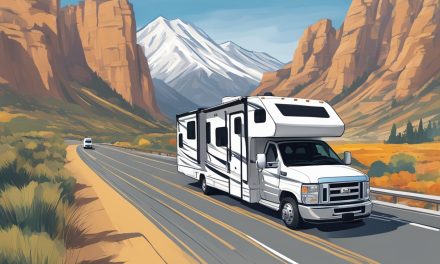Would you like to save this article?
Embarking on an RV adventure is a dream for many travelers seeking freedom, flexibility, and the open road. However, driving a recreational vehicle is not like operating a standard passenger car – it requires specialized skills, heightened awareness, and meticulous preparation.
RV travel offers incredible opportunities to explore landscapes and create lasting memories, but it also comes with unique challenges that demand respect and careful planning. The sheer size and handling characteristics of these vehicles make safety paramount, with statistics revealing that while RVs have a lower fatality rate compared to other vehicles, accidents can still occur.
Understanding and implementing comprehensive safety strategies can transform your RV journey from a potential risk into an exhilarating and secure experience. Here are 11 things to keep in mind:
1. Pre-Trip Safety Preparation
Before hitting the road, perform a detailed safety check that includes checking tire pressure and tread wear, verifying all lights are functioning, examining fluid levels, inspecting propane systems, and ensuring all bay doors are closed and latched. This comprehensive pre-trip inspection will help you identify any potential issues before they become serious problems on the road.
2. Weight and Balance Management
It’s also essential to ensure your RV is weighted evenly front to back and side to side. Proper weight distribution reduces wear and increases stability at highway speeds. Most camper trailers weigh around 5,200 pounds empty and can reach 6,700 pounds when loaded. Understanding your vehicle’s weight limits will help you maintain control while driving.
3. Safe Driving Distance
When you’re on the road, maintaining a safe driving distance is crucial. Leave at least 400 feet between your RV and the vehicle in front of you. A simple test is to count to four after the vehicle ahead passes a reference point like a mile marker. This practice allows for adequate reaction time in case of sudden stops or emergencies.
4. Defensive Driving Strategies
Driving defensively is another key aspect of RV safety. Always obey traffic rules and speed limits while avoiding distractions behind the wheel. Driving in the far right lane allows slower movement and gives you more time to react to unexpected situations. If you encounter an obstacle in your path, it’s safer to brake than to swerve.
5. Vehicle Limitations Awareness
Be aware of RV-specific challenges such as larger blind spots, extended braking distances, and reduced maneuverability. Understanding these limitations will help you navigate safely through traffic and tight spaces.
6. Understanding Vehicle Specifications
Additionally, know your vehicle’s limitations by understanding its height, weight, and towing capacity. Many accidents occur due to drivers exceeding their RV’s specifications, leading to dangerous situations on the road.
7. Campsite Safety Practices
When it comes to campsite safety, practice responsible camping by choosing authorized overnight stays and leveling your RV properly. Use wheel chocks to prevent rolling, secure valuables when leaving your campsite, and always close and lock doors behind you.
8. Emergency Preparedness
Emergency preparedness is vital for any road trip. Carry a comprehensive emergency kit that includes first-aid supplies, tools, water, food, and communication devices. Ensure all occupants know basic safety protocols and have a plan in place for emergencies while on the road.
9. Managing Driver Fatigue
Managing driver fatigue is essential for safe travel. Plan for regular breaks during long drives, share driving duties if possible, stay hydrated, and avoid driving late at night when fatigue can impair judgment.
10. Physical Condition Monitoring
Monitoring physical conditions is also important; be especially cautious if drivers are seniors since age can impact reaction times and vision. Regularly servicing your RV will help address any mechanical issues immediately before they lead to dangerous breakdowns.
11. Safety Statistics and Conclusion
Lastly, it’s worth noting an interesting safety statistic: RVs have an impressively low fatality rate of 0.44 per 100 million vehicle miles compared to 1.48 for all vehicles in the US. This demonstrates that with proper preparation and cautious driving, RV travel can be remarkably safe. By following these tips, you can enhance your safety on the road while enjoying the freedom of RV travel!





